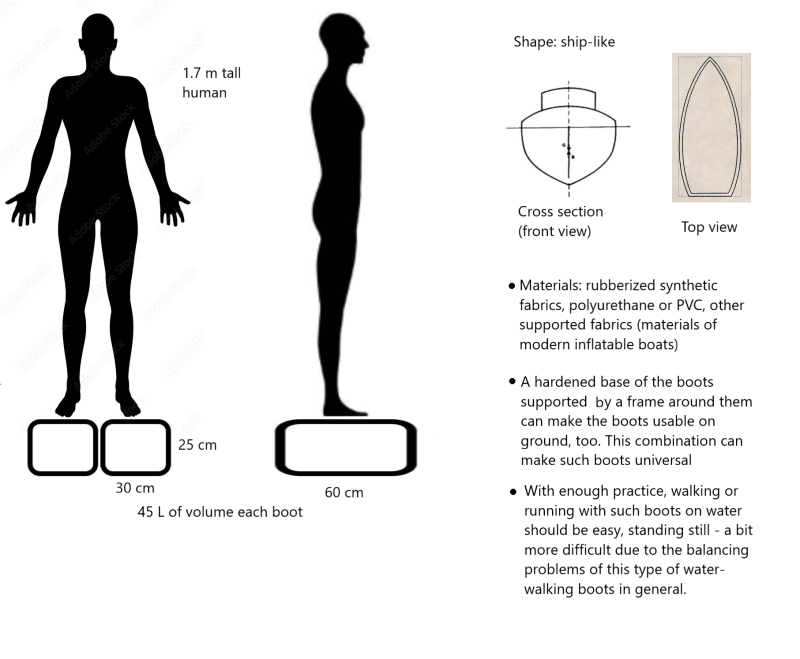Max_Connor
Student
- Jul 20, 2024
- 3
Hey!
Not sure where to post this, so I'll do it here.
I wanted to ask if anyone knows anything about real boots that would allow you to walk on water - maybe someone has created anything similar.
I'm talking about hollow boots that resemble boats and keep your body on the surface of water by displacing water. It shouldn't be inflatable ones like those you can see on YouTube - those are merely toys from aliexpress that are poorly designed. The boots shouldn't have any engines or machinery parts.
I came up with a small picture that explains the general idea, see it below. A couple things I would add: the polymeric fabrics should be wrapped around some metallic framework, which should be sturdy enough to withstand human weight when walking and running and be lightweight at the same time. The volume and dimensions of the boots can be slightly adjusted.
The questions are:
- Has anyone created such things? Is there anything similar to than on the internet (except those inflated boots from ali)?
- Is this a good idea in general and would water walking with such boots be comfortable after some training?
I would be thankful for any advice and thoughts.

Not sure where to post this, so I'll do it here.
I wanted to ask if anyone knows anything about real boots that would allow you to walk on water - maybe someone has created anything similar.
I'm talking about hollow boots that resemble boats and keep your body on the surface of water by displacing water. It shouldn't be inflatable ones like those you can see on YouTube - those are merely toys from aliexpress that are poorly designed. The boots shouldn't have any engines or machinery parts.
I came up with a small picture that explains the general idea, see it below. A couple things I would add: the polymeric fabrics should be wrapped around some metallic framework, which should be sturdy enough to withstand human weight when walking and running and be lightweight at the same time. The volume and dimensions of the boots can be slightly adjusted.
The questions are:
- Has anyone created such things? Is there anything similar to than on the internet (except those inflated boots from ali)?
- Is this a good idea in general and would water walking with such boots be comfortable after some training?
I would be thankful for any advice and thoughts.

